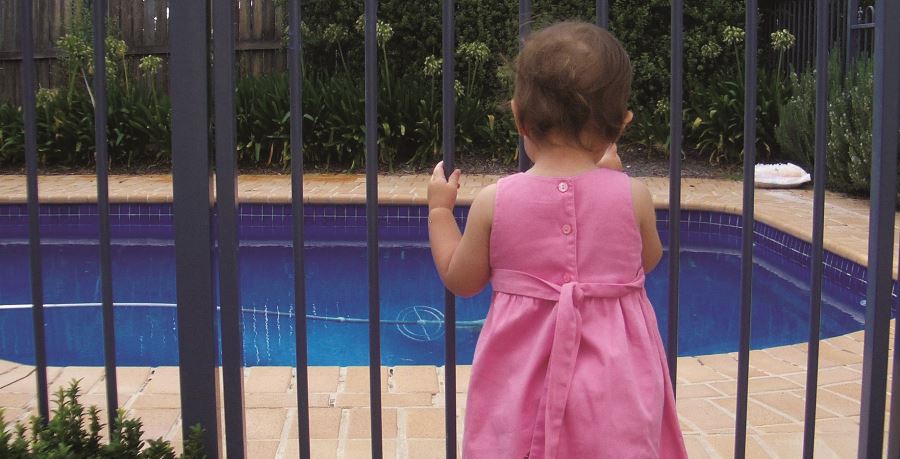
Why restrict children's access to water?
Children most commonly drown when they manage to find their way to water unnoticed by adults. Restricting access to water can slow your child down and give you time to respond if they do get out of sight. Restricting access can mean:
- Removing water sources completely – empty paddle pools, baths and buckets immediately after use.
- Placing a barrier around water. This includes a pool/spa barrier with a self-closing and self-latching gate and placing wire mesh over water features and ponds.
- Placing a barrier around the child. This takes the form of a Child Safe Play Area that can be used inside or outside the home and is especially effective for water you cannot fence off, such as dams on farms.
Why do I need to fence my pool?
A pool fence acts as a barrier to the pool and, as such, helps prevent access to the water by young children. Pool fencing is a legal requirement in Western Australia and heavy penalties can be imposed for non-compliant pools. Mandatory pool barriers have significantly reduced the rates of fatal toddler drowning across the country and continue to be an important line of defence against drowning.
Why do pool barriers fail?
Barriers can fail when gates are left propped open, fences and gates aren’t maintained, or climbable objects are left against the fence. Royal Life Saving encourages parents and guardians to regularly inspect their pool by downloading and completing a home pool safety checklist.
What about on rural properties?
On rural properties, where it is not feasible to fence off a dam or lake, Royal Life Saving encourages parents to create a “child safe area” close to the home and away from water bodies. Read more on our
Farm Water Safety page.
I don’t have children, why do I need to fence my pool?
Not having children doesn't mean a child can't drown in your pool. A significant percentage of toddler pool drowning deaths occur in the pool of a relative (15.8%) or neighbour (5.3%).
What type of gate do I need?
The gate of the pool fence is crucial in preventing a child’s access to the pool. Many people leave their pool gates propped open or have gates that close but do not lock. A child does not need a great deal of strength to push open an unlocked gate. The gate to the pool must be both securely self-closing and self-latching. Read more here.
How often should I check the fence to make sure it is in good working order?
Royal Life Saving recommends you conduct a thorough check of your fence every year before summer (and a quick check at least once a month) to ensure that it is not climbable, is in good repair, the gate when opened fully closes by itself and locks, there are no loose palings or support members, and there are no gaps under or through the fence.